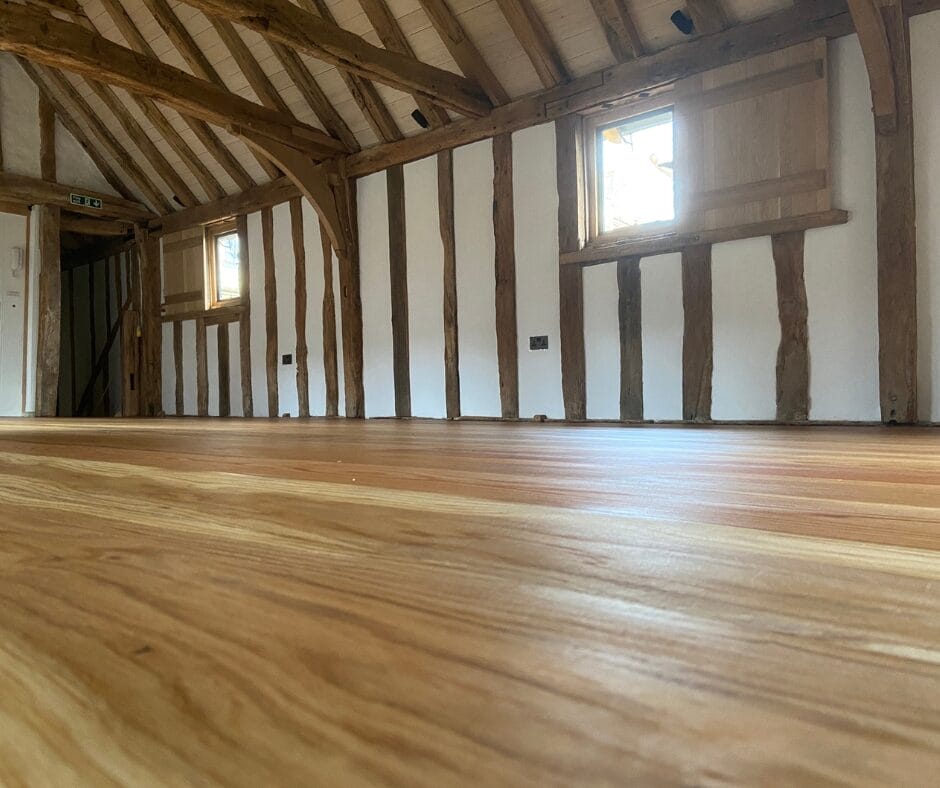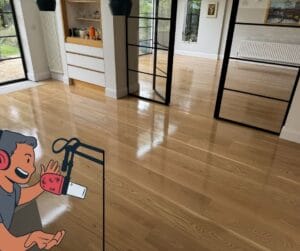This article aims to cover a very import question “How do you restore old wood flooring?”, infusing them with renewed charm and character while maintaining their historical integrity.
Whether you’re a seasoned DIY enthusiast or considering this project for the first time, these insights will help you navigate the restoration process confidently and creatively.
Restoring old wood flooring is a journey that combines art, history, and craftsmanship.
In Cambridge, where each home has its unique story, the revival of wood floors is more than just a renovation project… it’s a tribute to traditional materials’ timeless elegance and enduring quality.
The Hidden Treasure Under Your Feet
Your old wood flooring in Cambridge is a hidden gem, reflecting a rich history. To Restore these old wood floors not only brings out their inherent beauty but also preserves a piece of local heritage, making your home a part of Cambridge’s storied past.
Preparing Your Canvas
The restoration journey starts with preparation. Ensuring your floor is clean, stable, and damaged-free is crucial. This is the foundation of your project, where attention to detail in every board and nail sets the stage for a successful restoration.
Embracing Imperfections
Character marks in your wood flooring, like scratches and dents, tell a story. Treating these marks with care during restoration maintains the floor’s authenticity, allowing its history to shine through.
The Art of Sanding
Sanding is transformative. It requires a careful balance of technique and patience as it strips away years of wear to reveal the raw beauty beneath. This step is essential in preparing your floor for its new life.
The Final Flourish: Finishing
Choosing the right finish can dramatically enhance your floor’s appearance. It’s not just about aesthetics; the finish also provides crucial protection, ensuring your floor’s longevity and resilience.
A Commitment to Care For you Wood Floor!
Regular cleaning is important to preserving the beauty of your restored wood flooring. Gentle cleaning methods and proper care will extend its life and keep it looking its best.
The Preventative Steps
Implementing preventative measures, like using rugs and controlling indoor climate, can protect your floor from damage. This foresight is essential for maintaining your floor’s restored condition.
When to Call the Experts To Restore Old Wood Floors:
Sometimes, the restoration process may require professional expertise. In such cases, consulting with Cambridge’s skilled floor restorers can ensure your project’s success.
The Joy of Restoring Your Wood Floor
Completing a wood floor restoration is a rewarding experience. It’s about more than just improving your home’s appearance; it’s about reviving a piece of Cambridge’s architectural history and making it a living part of your home.
The journey of restoring old wood flooring in Cambridge is not just about home improvement; it’s a revival of history under your feet. It’s an opportunity to breathe new life into your space while paying homage to the craftsmanship of the past.
As you embark on this restoration adventure, remember that each step, from preparation to the final finish, adds a new chapter to your home’s story. Whether you choose the satisfaction of a DIY project or the expertise of a professional, the result is a durable, beautiful floor that will continue telling stories for generations to come.
Embrace the process, enjoy the transformation, and take pride in knowing you’re preserving a piece of Cambridge’s rich architectural heritage. Your restored wood floors will not only enhance the beauty and value of your home but also serve as a testament to the timeless charm of natural wood and the enduring charm of historical preservation.
Check out this amazing restoration of a Historic Floor we did a couple of years ago:
FAQ’s about restoring old wood flooring.
- What are the steps to restore wood flooring on a DIY basis?
Restoring wood flooring involves four main steps: preparation, sanding, staining (optional), and finishing. The process starts with completely clearing the room for unimpeded access to the floor. Sanding typically begins with coarse paper and progresses to finer grades for a smooth finish. If you want staining, it’s done post-sanding and pre-finishing. The finishing stage usually requires multiple coats, starting from the edges and working inward.
- What should I consider before starting the restoration process?
It’s crucial to fully clear the space, avoiding damage to the floor while moving heavy furniture. If using a rented sander, follow the instructions, starting with coarse sandpaper and moving to finer grades for optimal results. This careful approach helps preserve the quality of the wood flooring.
- Can I stain my floor during the restoration process?
Yes, staining is an option and should be done immediately after sanding. Ensure you remove all dust from sanding before staining. Staining gives the wood a desired colour or tone, but it’s important to note that it’s a step you can opt out of if you prefer the natural colour of the wood.
- How does professional floor restoration differ from DIY?
Professional restoration typically ensures a higher standard of finish, as experts possess the necessary equipment and experience. While more costly than DIY, professional restoration saves time and often yields a more polished result. It’s advisable to research and possibly consult previous professional service clients to gauge their quality of work.
 Written by Tracey Gilbey, Marketing and Admin Coordinator at Art of Clean.
Written by Tracey Gilbey, Marketing and Admin Coordinator at Art of Clean.
For further advice or information on our carpet and soft furnishing care, please do not hesitate to contact the Art of Clean team at 01223 901551 in Cambridge. Our services include Carpet Cleaning, Upholstery Cleaning, oriental and area Rug Cleaning, Curtain Cleaning, Patio, and Driveway Pressure washing, Leather Cleaning, Stone and Tile Floor Cleaning, and Wood Floor Sanding and Restoration. We also supply new flooring and carpets through our sister company Art of Flooring. Our Dry-Cleaning service is provided by Farthings Cambridge


















